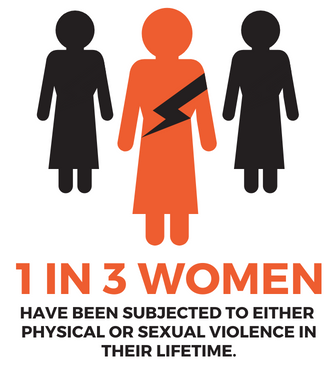
Facts and Figures: Ending Violence against Women and Girls

-

1 in 3 women, worldwide, have experienced physical or sexual violence.1
-
Violence by a husband or male intimate partner (physical, sexual or psychological) is the most widespread form of violence against women globally.2
-
2 in 3 women report that they or a woman they know have ever experienced violence.3
-
Most violence against women is intimate partner violence. In Southeast Asia 33 per cent of partnered women aged 15-49 will experience physical and/or sexual violence from a current or former husband or male partner at least once in their lifetime. 17 per cent of partnered women subjected to physical and/or sexual violence from a current or former partner in the past 12 months.4
-
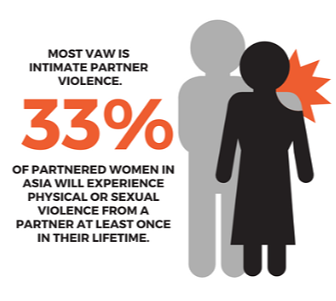
In many countries across Asia and the Pacific, the proportion of women who report having experienced physical or sexual violence by an intimate partner in their lifetime is substantially higher than the global average of 27 per cent; at 35 per cent in India, 38 per cent in Timor Leste, and 50 percent and over in Fiji, Kiribati, Papua New Guinea, Solomon Islands and Bangladesh.5
-
In the past 12 months alone, 28 per cent of women in Timor-Leste, 29 per cent of women in Vanuatu, 31 per cent of women in PNG and 23 per cent of women in Bangladesh experienced intimate partner violence. 6This is substantially above the global average of 13 per cent.
-
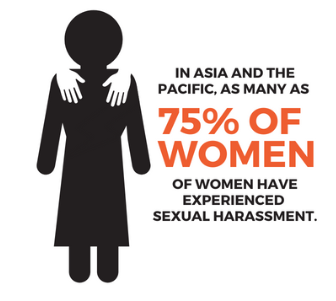
In Asia and the Pacific, as many as 75 per cent of women have experienced sexual harassment.7
-
Women are less likely to report sexual abuse as they fear retaliation, rejection, victim-blaming, and stigmatisation.8
-
Only 77 countries have legislation that explicitly criminalises marital rape.9
-
In most cases of sexual violence, the perpetrator is not a stranger, but a partner, a family member, a friend or a neighbour. Ninety-one per cent of survivors in Thailand and 86 per cent of survivors in Vietnam stated that they knew their rapist prior to the incident.10
-

20,000 women were killed by intimate partners or family members in Asia in 2017, alone. Although the percentage of women and girls intentionally killed by their intimate partners or family members is greatest in Africa, Asia hasthe largest number of women and girls killed overall.11
-
In China, 38 per cent of women experienced psychological violence by their own partners.12
-
Statistics on sexual violence against women in the Western-Pacific Region, show some of the highest prevalence rates worldwide. In Nauru, over 43 percent of women fell victim to sexual violence in their lifetime, by a perpetrator who was not their current or former partner, while 28 percent of women in Vanuatu stated that their first sexual experience was forced.13
-
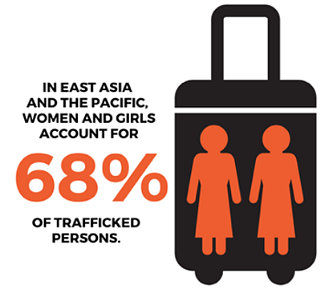
In East Asia and the Pacific, women, and girls make up 68 percent of trafficked persons. About a half of the detected victims in the region are women.14
-
The majority of detected victims in East Asia and the Pacific continue to be trafficked for sexual exploitation, accounting for 64 percent of detected cases.15
-
In Indonesia, 49 per cent of girls under 14 have undergone some form of female genital mutilation, although it is outlawed.16
-
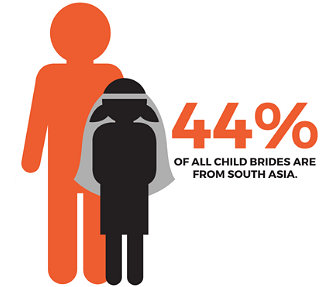
44 per cent of all child brides are from South Asia. Globally 650 million girls and women alive today were married before the age of 18.17
-
Violence against women in the Asia-Pacific region is also perpetrated through sexual and street harassment, menstruation stigmatisation and lack of access to hygiene products, dowry-related violence, forced marriage, digital harassment and cyberviolence, marital rape and lack of access to justice and survivor-centred support systems.
----------------------------------
- WHO, Violence against women, March 2021 https://www.who.int/news-room/fact-sheets/detail/violence-against-women
- WHO, Violence against women, March 2021 https://www.who.int/news-room/fact-sheets/detail/violence-against-women
- UN Women and Women Count, November, 2021 http://unwo.men/TWtj50GWKVq
- WHO (2021), Violence Against Women Prevalence Estimates
- WHO (2021), Violence Against Women Prevalence Estimates
- WHO (2021), Violence Against Women Prevalence Estimates
- https://www.instagram.com/p/CaGyuG1OBtm/
- OHCR, 2019 https://www.instagram.com/p/CcXGEpKsoF_/
- Based on the data from 185 countries as of 2018, UN Women, 2019. https://www.instagram.com/p/CXXaQjZldt3/
- UN Women, UNDP and UNODC 2017: Trial of Rape – Understanding the criminal justice system response to sexual violence in Thailand and Viet Nam, Summary Report, p. 9
- UNODC (2018) Global Study on Homicide Gender Related Killing of Women and Girls
- UNFPA (2019) KnowVAWData
- UNFPA (2019) KnowVAWData
- UNODC (2016) Global Report on Trafficking in Persons, Fig. 137
- UNODC (2016) Global Report on Trafficking in Persons, Fig. 138
- UNICEF (2016) Female Genital Cutting/Mutilation / UNFPA: Tackling FGM In Indonesia
- UNICEF (2018) United Nations Children’s Fund, Child Marriage: Latest trends and future prospects, Pg.2-3
